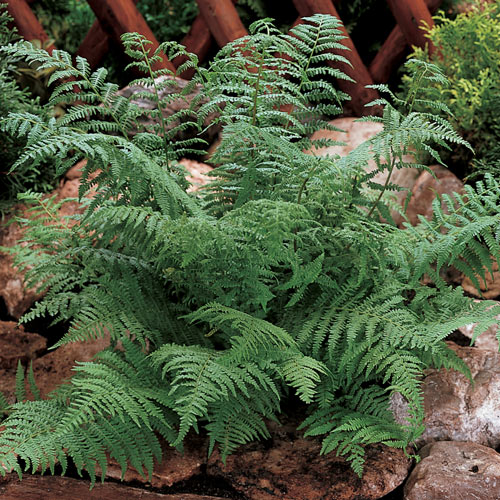The fern Athyrium filix-femina (Lady Fern) has ancient roots within the woodlands of Europe, North America, and Asia. The fossil records indicate that Athyrium filix-femina originated millions of years ago which shows it to be an enduring plant species that has withstood numerous environmental changes. The delicate fern known as Athyrium filix-femina was first documented by botanists in the 17th century who were fascinated by its intricate and lacy fronds.
During the medieval period people held this species in mystical esteem because of its unique presence. Traditional narratives situated the plant within enchanted forests and attributed magical properties to its feather-like leaves. Native American communities were the initial practitioners to record its practical applications by using it both as a medicinal plant and an essential element of their cultural customs. Throughout historical periods, this plant has stayed strong as a symbol of endurance while flourishing in wet forest areas and shaded environments.
Lady Fern A Longstanding Medicinal Marvel
Traditional medicine practitioners have used Athyrium filix-femina to address multiple health conditions for hundreds of years. Native American tribes prepared medicinal brews from the rhizomes of this plant to address digestive problems including intestinal discomfort and parasitic infections. The gentle yet effective properties of this herb led early European herbalists to treat coughs and fevers and also apply it to minor wounds.
Historical records indicate that Lady Fern extracts were used as anthelmintics to remove intestinal worms until the 19th century. Poultices derived from fronds served as natural remedies for insect bites and skin irritations by addressing minor skin problems. Even though contemporary medical practices now primarily depend on pharmaceutical treatments, understanding these historical uses proves the plant’s diverse applications.
Discovery and Early Uses
The species existed long before scientific records but received its botanical classification during the mid-1700s. Field studies of temperate forests by early naturalists revealed the plant's extensive distribution throughout the Northern Hemisphere. Advancements in botanical sciences elevated this species to become the most recognized within its genus for its dual ecological importance and visual beauty.
Gardeners throughout Europe during the 18th and 19th centuries started planting this species in ornamental gardens because of its graceful appearance and minimal care requirements for shaded environments. The plant thrived in moist woodland settings which led to its common presence in Victorian gardens that showcased complex fern arrangements as a symbol of refinement. During the 19th century people moved this plant from natural settings into managed garden areas which established its reputation as an ideal plant for shaded environments.
Lady Fern A Stunning Addition to the Landscape
Athyrium filix-femina stands as a natural work of art that delivers striking visual contrast wherever it appears. The soft, airy feel of shaded gardens emerges from its vivid green fronds which arch gracefully. The delicate and feathery fronds form intricate patterns that create an ethereal look. The plant's fronds move softly in the wind because they lack the stiffness and woodiness of more traditional foliage thus they create a peaceful motion in garden areas.

Landscape designers frequently use this plant to fill empty spaces beneath trees and along shaded paths as well as in moist areas near water features. Its dense foliage generates a calming woodland atmosphere which makes it an ideal plant for naturalistic landscapes and native gardens. Gardeners plant it next to hostas wildflowers and mosses because it pairs well with many shade-loving perennials to establish a layered visual environment.
A Rare Haven for Wildlife
Lady Fern contributes to the ecological balance in its environment by offering shelter to multiple endangered and sensitive wildlife species. The fronds of Athyrium filix-femina serve as a nursery for specific moth and butterfly species which lay their eggs there so their larvae can consume the plant during their development. The presence of Athyrium filix-femina establishes an important microhabitat that supports pollinators that would otherwise face difficulty locating appropriate host plants within shaded regions.
Woodland frogs and salamanders utilize dense foliage to protect themselves from predators. The plant creates habitats for ground-dwelling insects which enhances ecosystem biodiversity in forested wet areas. The soft fronds used by ground-nesting birds for their nests serve as a functional element that highlights the importance of the forest floor environment.
Lady Fern A Resilient and Hardy Species
The remarkable quality of Lady Fern lies in its strong resilience. Athyrium filix-femina displays remarkable adaptability to different climate conditions as it prospers in both temperate forests and moist garden environments. This plant prefers rich and well-draining soil which allows it to endure heavy rainfall and sustain its healthy, bright leaves.
This species shows remarkable resistance to cold weather and displays strong recovery after winter dormancy when spring arrives. This plant requires partial to full shade for optimal growth but can endure short exposure to dappled sunlight which enables it to grow in diverse settings.
